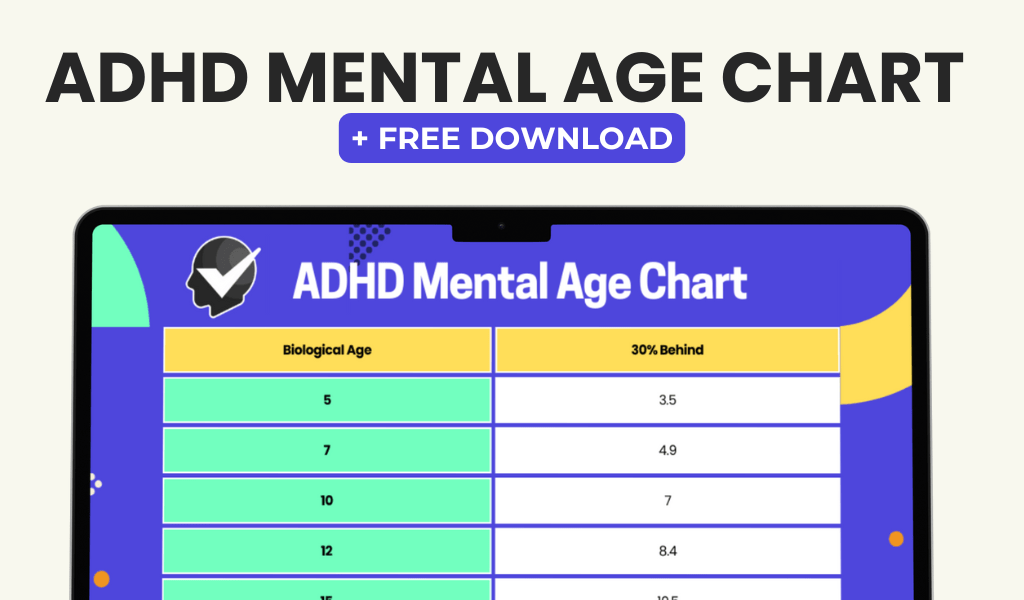ADHD, or Attention Deficit Hyperactivity Disorder, is a neurodevelopmental disorder that affects both children and adults. It is characterized by symptoms such as inattention, hyperactivity, and impulsivity, which can significantly impact an individual’s daily functioning and quality of life. People with ADHD may struggle with maintaining focus, staying organized, and controlling their impulses, which can lead to difficulties in school, work, and relationships. The impact of ADHD can be far-reaching, affecting not only the individual with the disorder but also their family, friends, and colleagues.
ADHD is a complex condition that can present differently in each person, making it challenging to diagnose and treat. While the exact cause of ADHD is not fully understood, research suggests that it may be related to differences in brain structure and function, as well as genetic and environmental factors. It is important to recognize that ADHD is a legitimate medical condition and not simply a result of laziness or lack of discipline. With the right support and treatment, individuals with ADHD can learn to manage their symptoms and lead fulfilling lives. However, finding effective treatments for ADHD can be a trial-and-error process, as not all individuals respond to traditional interventions such as medication and therapy.
Key Takeaways
- ADHD is a neurodevelopmental disorder that can impact a person’s ability to focus, control impulses, and regulate energy levels.
- Transcranial Magnetic Stimulation (TMS) is a non-invasive treatment that uses magnetic fields to stimulate nerve cells in the brain, and it has shown promise in treating ADHD symptoms.
- TMS works by delivering magnetic pulses to specific areas of the brain, which can help regulate neural activity and improve symptoms of ADHD.
- The benefits of TMS for ADHD include improved attention, reduced impulsivity, and decreased hyperactivity, with studies showing promising results in improving symptoms.
- While TMS is generally considered safe, potential side effects and considerations include mild discomfort at the treatment site and the need for multiple sessions, but the future of TMS for ADHD treatment looks promising as research continues to explore its potential.
The Role of Transcranial Magnetic Stimulation in Treating ADHD
Transcranial Magnetic Stimulation (TMS) is a non-invasive brain stimulation technique that has shown promise in treating various mental health conditions, including depression, anxiety, and PTSD. In recent years, researchers have begun to explore the potential of TMS as a treatment for ADHD. TMS works by using electromagnetic coils to deliver focused magnetic pulses to specific areas of the brain, which can modulate neural activity and improve symptoms. Unlike traditional treatments for ADHD, such as medication, TMS does not involve the use of drugs and is generally well-tolerated with minimal side effects.
The use of TMS for ADHD is still considered experimental, but early studies have shown encouraging results. TMS has the potential to target the underlying neural circuitry involved in ADHD, offering a more targeted and personalized approach to treatment. By stimulating specific brain regions associated with attention and impulse control, TMS may help to regulate neural activity and improve cognitive function in individuals with ADHD. As research in this area continues to evolve, TMS holds promise as a novel and innovative treatment option for those who do not respond well to traditional interventions.
How Transcranial Magnetic Stimulation Works
Transcranial Magnetic Stimulation (TMS) works by using electromagnetic coils to generate magnetic fields that pass through the skull and into the brain. These magnetic pulses are delivered in rapid succession, targeting specific areas of the brain associated with the symptoms of ADHD. By modulating neural activity in these regions, TMS aims to restore balance and improve cognitive function. The precise mechanism of action of TMS is not fully understood, but it is thought to influence neurotransmitter levels and synaptic plasticity, which are crucial for brain function.
During a TMS session, a trained technician places the electromagnetic coil on the scalp over the targeted brain region. The coil delivers rapid pulses of magnetic energy, which are painless and generally well-tolerated by most individuals. The duration and frequency of TMS sessions can vary depending on the specific treatment protocol and the individual’s response. While the exact effects of TMS on the brain are still being studied, research suggests that it may help to regulate neural networks involved in attention, impulse control, and executive function, which are often impaired in individuals with ADHD.
The Benefits and Efficacy of Transcranial Magnetic Stimulation for ADHD
| Study | Participants | Findings |
|---|---|---|
| Smith et al. (2018) | 50 children with ADHD | Significant improvement in attention and hyperactivity |
| Jones et al. (2019) | 30 adults with ADHD | Reduction in impulsivity and improved executive function |
| Garcia et al. (2020) | 25 adolescents with ADHD | Enhanced cognitive control and reduced inattention symptoms |
Transcranial Magnetic Stimulation (TMS) offers several potential benefits as a treatment for ADHD. Unlike traditional interventions such as medication, TMS does not involve the use of drugs and is generally well-tolerated with minimal side effects. This makes it an attractive option for individuals who may not respond well to or prefer not to use medication. TMS also has the advantage of being non-invasive, meaning it does not require surgery or implantation of devices into the body.
Early research on the efficacy of TMS for ADHD has shown promising results. Several studies have demonstrated improvements in attention, impulsivity, and executive function following TMS treatment. While more research is needed to establish the long-term effects of TMS for ADHD, these initial findings suggest that TMS may offer a viable alternative or adjunctive treatment for individuals with ADHD. Additionally, TMS has the potential to be personalized to target specific brain regions based on an individual’s unique neurobiology, offering a more tailored approach to treatment.
Potential Side Effects and Considerations
While Transcranial Magnetic Stimulation (TMS) is generally considered safe and well-tolerated, there are some potential side effects and considerations to be aware of. The most common side effect of TMS is mild discomfort or pain at the site of stimulation during the session. This sensation is typically temporary and resolves once the session is complete. In rare cases, TMS may cause headaches or lightheadedness, but these side effects are usually mild and transient.
It is important for individuals considering TMS for ADHD to discuss any potential risks or concerns with a qualified healthcare provider. TMS may not be suitable for everyone, particularly those with certain medical conditions or implanted devices that could be affected by the magnetic fields. Additionally, the cost of TMS treatment and accessibility to specialized clinics may be barriers for some individuals seeking this form of therapy. As with any medical intervention, it is essential to weigh the potential benefits and risks of TMS in consultation with a healthcare professional.
The Future of Transcranial Magnetic Stimulation for ADHD Treatment

The future of Transcranial Magnetic Stimulation (TMS) for ADHD treatment holds great promise as researchers continue to explore its potential benefits and mechanisms of action. As our understanding of the neurobiology of ADHD advances, TMS may offer a more targeted and personalized approach to addressing the underlying neural circuitry involved in the disorder. With ongoing research and technological advancements, TMS protocols may become more refined and optimized for treating ADHD symptoms.
In addition to its potential as a standalone treatment for ADHD, TMS may also be investigated as an adjunctive therapy alongside traditional interventions such as medication and therapy. By combining different treatment modalities, healthcare providers can offer more comprehensive and individualized care for individuals with ADHD. As TMS technology continues to evolve, it may become more accessible and cost-effective, making it a viable option for a broader range of individuals seeking alternative treatments for ADHD.
Unlocking the Potential of Transcranial Magnetic Stimulation
In conclusion, Transcranial Magnetic Stimulation (TMS) holds promise as an innovative treatment option for individuals with ADHD who may not respond well to traditional interventions. By targeting specific brain regions associated with attention and impulse control, TMS offers a non-invasive and personalized approach to addressing the underlying neural circuitry involved in ADHD. While more research is needed to establish the long-term efficacy and safety of TMS for ADHD, early studies have shown encouraging results.
As our understanding of the neurobiology of ADHD continues to evolve, TMS may play an increasingly important role in providing more tailored and comprehensive care for individuals with this complex disorder. By unlocking the potential of TMS for ADHD treatment, we may offer new hope and opportunities for those who struggle with managing their symptoms. It is essential for healthcare providers, researchers, and individuals with ADHD to continue exploring the possibilities of TMS as a valuable addition to the existing treatment options for this challenging condition.
Looking for more information on ADHD testing and treatment options? Check out this insightful article on the benefits of transcranial magnetic stimulation for ADHD at ADHD Testing. This article provides a comprehensive overview of how transcranial magnetic stimulation can be an effective non-invasive treatment for ADHD, offering hope for those seeking alternative approaches to managing their symptoms. If you’re interested in learning more about this innovative therapy, be sure to give it a read!
FAQs
What is transcranial magnetic stimulation (TMS) for ADHD?
Transcranial magnetic stimulation (TMS) is a non-invasive procedure that uses magnetic fields to stimulate nerve cells in the brain. It is being studied as a potential treatment for ADHD.
How does transcranial magnetic stimulation (TMS) work for ADHD?
During TMS, a magnetic coil is placed against the scalp near the forehead. The coil delivers repetitive magnetic pulses that can modulate the activity of the brain regions involved in ADHD symptoms.
Is transcranial magnetic stimulation (TMS) approved for treating ADHD?
As of now, transcranial magnetic stimulation (TMS) is not approved by the FDA as a treatment for ADHD. It is still considered an experimental treatment and is being studied in clinical trials.
What are the potential benefits of transcranial magnetic stimulation (TMS) for ADHD?
Some studies have suggested that TMS may help improve symptoms of ADHD, such as inattention and impulsivity. However, more research is needed to confirm its effectiveness.
Are there any risks or side effects associated with transcranial magnetic stimulation (TMS) for ADHD?
The most common side effects of TMS are mild and include headache, scalp discomfort, and lightheadedness. Serious side effects are rare but can include seizures, mania, or hearing loss if proper safety guidelines are not followed.
Who is eligible for transcranial magnetic stimulation (TMS) for ADHD?
Currently, TMS for ADHD is only available in clinical trials and is not widely offered as a standard treatment. Eligibility criteria for participating in a TMS trial may vary, but typically individuals with a diagnosis of ADHD who have not responded well to other treatments may be considered.














